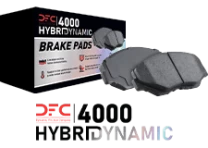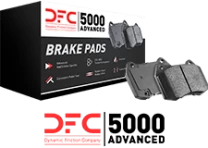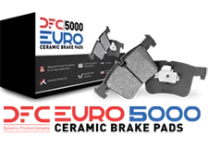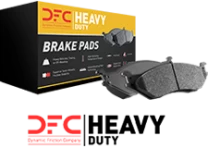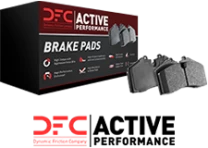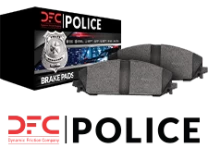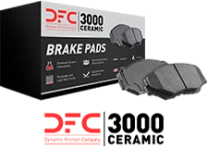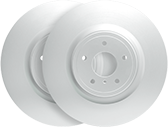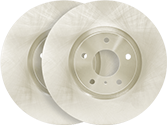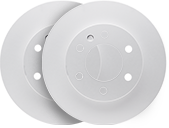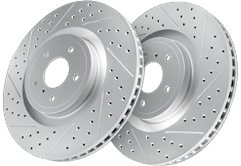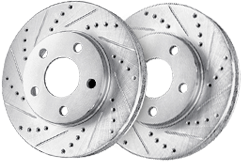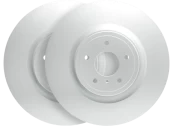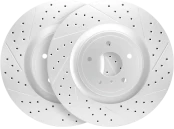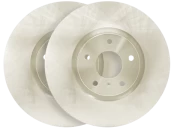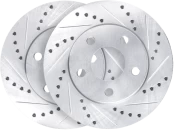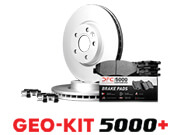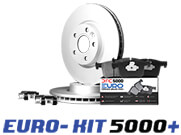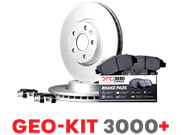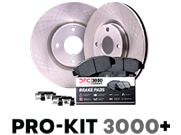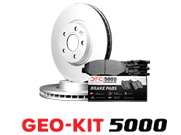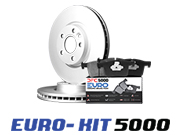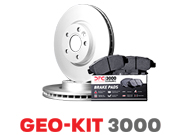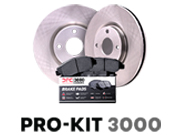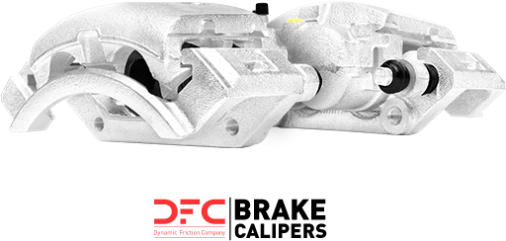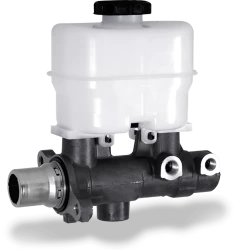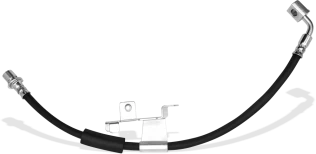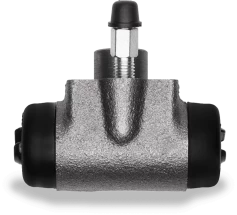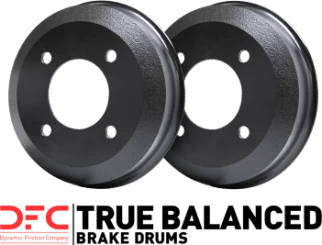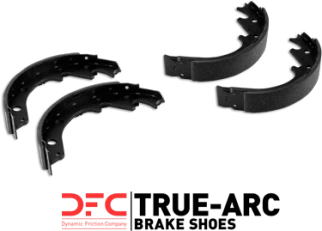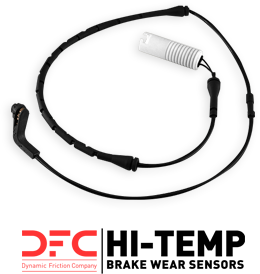
When choosing brake rotors for your Honda CR-V, it’s essential to know the options. This guide covers OEM, performance, and coated rotor types for Honda CR-Vs, specifically focusing on the various “rotor types for Honda CR-V” to help you pick the right one.
Key Takeaways
- OEM brake rotors for Honda CR-V ensure compatibility, reliability, and maintain factory performance, making them ideal for authenticity and dependable performance.
- Performance brake rotors, including slotted, drilled, and drilled-and-slotted designs, offer enhanced braking efficiency, superior cooling, and improved durability for demanding driving conditions.
- Coated brake rotors protect against corrosion and extend lifespan, providing a practical and visually appealing option, while premium brands like R1 Concepts deliver high quality and long-term cost-effectiveness.
OEM Brake Rotors for Honda CR-V
OEM brake rotors for the Honda CR-V offer:
- Compatibility and reliability, as they are designed to match the original specifications of the vehicle
- Longer lifespan and consistent performance compared to many aftermarket options
- High quality and durability, making them a worthwhile investment
- Maintenance of the vehicle’s warranty and resale value
The benefits of choosing OEM brake rotors for your Honda CR-V are numerous:
- They provide the reliability you expect from well-known brands
- They maintain the factory performance and trustworthiness that comes with the original parts
- This is particularly important for those who want to ensure their vehicle operates just as it did when it first rolled off the assembly line.
Additionally, OEM brake rotors, including front rotors, are often supplied in plain boxes with the car manufacturer’s logo on the part, signaling their authenticity and direct alignment with factory standards. For Honda CR-V owners who prioritize authenticity and uncompromising performance, OEM rotors are a top choice when it comes to auto parts.
Performance Brake Rotors

Performance brake rotors are designed for those who demand more from their braking system. Whether it’s for spirited driving or heavy-duty use, these rotors enhance braking power and longevity. They come in various designs, including slotted, drilled, and drilled and slotted, each tailored to manage heat and improve performance in demanding situations.
Let’s explore these designs in more detail.
Slotted Brake Rotors
Slotted brake rotors are engineered with curved slots that channel water and debris away from the brake pad surface. This design not only keeps the rotor clean but also improves braking efficiency by providing a fresh surface for the brake pads to grip.
The slotted design significantly enhances braking performance by dissipating heat more effectively, which is crucial during heavy use. By reducing the risk of brake fade, slotted rotors ensure that your Honda CR-V can handle intense braking situations without compromising safety. This makes them an excellent choice for drivers who demand consistent performance under various conditions.
Moreover, the slots help in removing debris and gases from the rotor surface, further enhancing the braking performance. This continuous clearing action ensures that the brake pads maintain optimal contact with the rotor, providing reliable stopping power every time.
Drilled Brake Rotors
Drilled brake rotors feature strategically placed holes that help ventilate heat away from the braking surface, acting as cooling vanes. This design is particularly effective in high-performance driving scenarios where excessive heat can lead to brake fade.
By allowing heat to escape through the drilled holes, these rotors maintain a cooler operating temperature, which prevents brake fade and ensures consistent braking performance. For those who push their vehicles to the limit, drilled brake rotors offer a significant advantage.
Drilled and Slotted Brake Rotors
Drilled and slotted brake rotors offer the following benefits:
- Superior cooling
- Enhanced braking performance
- Heat management
- Debris removal
- Clean and efficient braking surface
This combination provides the best of both worlds, making drilled and slotted rotors ideal for drivers who need robust and reliable braking performance in various driving conditions. The superior cooling capabilities and debris removal make these rotors a top choice for those who demand the utmost from their braking system.
Coated Brake Rotors
Coated brake rotors are designed to prevent corrosion, significantly extending their lifespan. These rotors feature a protective layer that shields them from rust and wear, making them a durable and long-lasting option for Honda CR-V owners.
Brands like Dynamic Friction Company have developed advanced anti-corrosion technologies. For instance, DFC’s geospec rotors are consist zinc and aluminum flake coating that is water-based and environmentally friendly, providing excellent anti-rust protection while being eco-conscious.
In addition to their protective benefits, coated rotors also offer an improved visual appearance and can be directly fitted without the need for cleaning, saving on labor costs. This makes them a practical and aesthetically pleasing choice for those looking to maintain their vehicle’s pristine condition.
Premium Brand Options
When it comes to premium brake rotor options, brands like Dynamic Friction Company stand out. These high-quality rotors offer enhanced performance and durability, making them a preferred choice for Honda CR-V owners who prioritize quality and reliability.
Choosing a premium brand ensures that you get rotors that are designed to last longer and perform better under various conditions. While the initial cost might be higher, the long-term benefits, including fewer replacements and better overall performance, make them a cost-effective choice.
Additionally, premium brands often offer better warranties and customer support, providing peace of mind and ensuring that you get the most out of your investment. For those looking to shop for the best, premium rotors are undoubtedly worth considering.
Factors to Consider When Choosing Brake Rotors
Choosing the right brake rotors involves considering several factors to ensure optimal performance and longevity. One crucial aspect is the driving conditions. For regular driving, drilled and slotted rotors may not provide significant benefits and could result in less effective stopping under normal conditions.
The quality of the rotor material is another critical factor. High-quality materials can prevent issues like warping and ensure that the rotors last longer. It’s essential to choose rotors that meet or exceed OEM standards to get the best performance and durability.
Finally, compatibility with your Honda CR-V is paramount. Ensuring that the rotors fit perfectly with your vehicle’s braking system is crucial for maintaining optimal performance and safety. Always check the specifications and consult with a professional if necessary.
How to Replace Front Brake Rotors on a Honda CR-V
Replacing the front brake rotors on your Honda CR-V is a task that requires careful attention to detail. Here are the steps to follow:
- Start by lifting the vehicle at the specified lift points mentioned in the owner’s manual and using jack stands for safety.
- Remove the lug nuts and tires.
- Proceed to remove the brake caliper, ensuring it is supported properly.
Next, to replace your front brake pads, follow these steps:
- Remove the screws holding the rotor to the hub and take off the worn pads.
- Clean off old grease and re-lubricate the new brake pads before installing them.
- Compress the caliper piston using an old brake pad and a C-clamp.
- Install the new pads on the bracket.
Reinstalling the brakes involves the following steps:
- Reinstall the rotor and caliper bracket, rotating the rotor to check for proper alignment.
- Apply proper lubrication to all moving parts and re-install the caliper.
- Finally, reinstall the tires, torque the lug nuts to the correct specifications, lower the car, and pump the brakes to build pressure before driving.
- Check and top off the brake fluid level if necessary.
Maintenance Tips for Long-Lasting Brake Rotors
Maintaining your brake rotors involves:
- Regular inspections and cleaning to detect early signs of wear such as cracks, warping, or rusting
- Cleaning the rotors regularly to remove debris and prevent buildup that may cause uneven wear
- Proper bedding-in of new rotors, which involves a series of controlled stops to ensure even deposition of brake pad material on the rotor surface and achieve optimal braking performance
- Complete maintenance of the braking system, including pulling pins out of calipers, cleaning, and greasing them with high-temperature brake grease, to ensure smooth operation.
Driving habits also significantly impact rotor lifespan. Here are some tips to reduce wear on the rotors:
- Avoid hard, sudden stops
- Use engine braking on steep hills
- Regularly check and change brake fluid to improve stopping performance and maintain the overall health of the braking system.
Summary
Choosing the right brake rotors for your Honda CR-V is essential for ensuring safety and performance. From OEM to high-performance and coated rotors, each type offers unique benefits. Understanding these differences helps you make an informed decision that aligns with your driving needs.
By considering factors like driving conditions, rotor material quality, and compatibility, you can extend the lifespan of your rotors and maintain optimal braking performance. Regular maintenance and proper installation practices further enhance the longevity and reliability of your braking system. Make the right choice, and keep your Honda CR-V running smoothly and safely.
Frequently Asked Questions
What are the benefits of OEM brake rotors for my Honda CR-V?
Using OEM brake rotors for your Honda CR-V can ensure compatibility, reliability, and maintain factory performance, which can help preserve your vehicle’s warranty and resale value.
Are slotted brake rotors better for heavy braking conditions?
Yes, slotted brake rotors are better for heavy braking conditions because they dissipate heat more effectively and reduce brake fade during intense use.
How do coated brake rotors prevent corrosion?
Coated brake rotors prevent corrosion by using protective layers like zinc and aluminum flake coatings that inhibit rust and extend the rotors’ lifespan.
What factors should I consider when choosing brake rotors?
When choosing brake rotors, consider driving conditions, rotor material quality, and compatibility with your vehicle to ensure optimal performance and longevity. These factors can significantly impact your braking system’s effectiveness.
How can I extend the lifespan of my brake rotors?
Regular inspections, proper bedding-in of new rotors, and maintaining good driving habits are key to extending the lifespan of your brake rotors. With these steps, you can significantly increase their longevity.

 UNITED STATES
UNITED STATES
